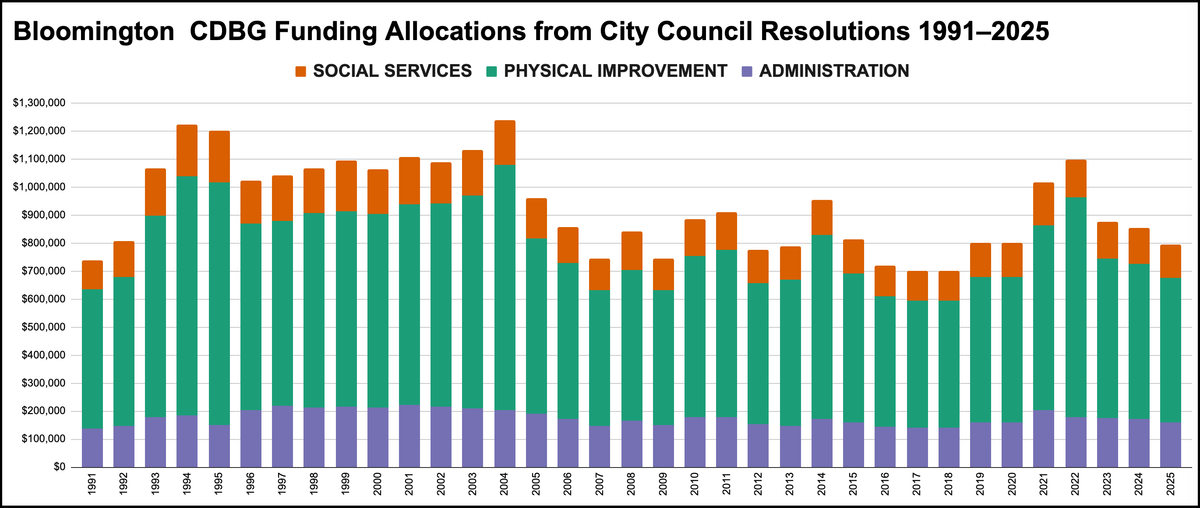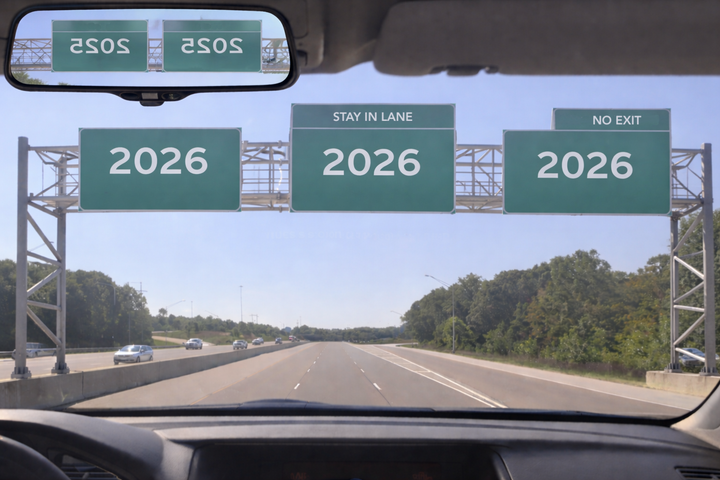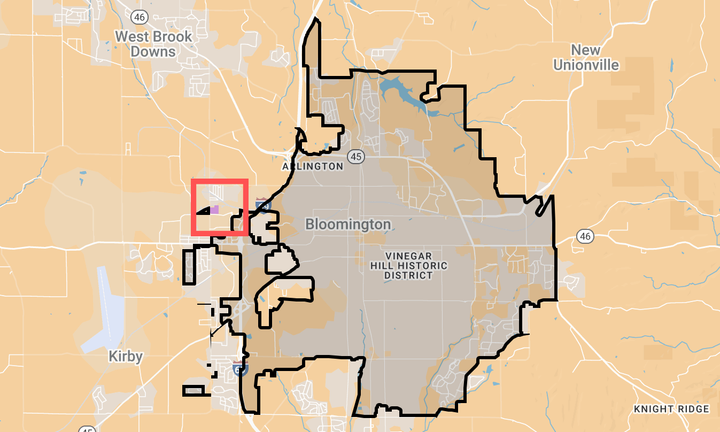Bloomington allocates almost $800,000 in Community Development Block Grants

At its Wednesday meeting, Bloomington's city council approved $795,743 in federal Community Development Block Grant (CDBG) funds for 2025, allocating resources across social services, physical improvements, and administrative costs.
The funding comes from the U.S. Department of Housing and Urban Development, which calculates allocations using metrics like poverty levels, population density, and housing conditions. HUD requires 70% of the funds to directly benefit low-to-moderate income residents. This year's allocations come in the context of general uncertainty about the future of federal funding, since the start of President Donald Trump's second administration earlier this year.
Bloomington's CDBG funding will be distributed with 20% ($159,148) dedicated to administration, 15% ($119,361) to social services, and 65% ($517,233) to physical improvements, supporting a range of local community projects.
Social service recipients include Community Kitchen's free meal programs, Boys and Girls Club's after-school initiative, emergency shelter by Beacon's Friends Place, and food distribution efforts by Hoosier Hills Food Bank and Mother Hubbard's Cupboard.
Physical improvement projects include infrastructure and facility upgrades, like flooring for a Center Stone group home, sewer main extensions in the Broadview neighborhood, rehabilitation projects for Life Designs, elevator railings for Middleway House, and playground equipment for New Hope for Families and Summit Hill Community Development Corporation. Physical improvements also include the purchase of land by Mother Hubbard's Cupboard.
The city's Housing and Neighborhood Development staff stressed to city councilmembers the competitive nature of the process, noting that funding requests are typically twice or three times the available allocation. A citizens advisory committee carefully reviews and scores each application to determine final distributions. This year the committee included Terry Amsler, Michelle Gilchrist, Chris Hazel, Sue Sgambelluri, Jill Jolliff, Cody Toothman, Kyla Cox Deckard, Mitch Berg, Randy Cassidy, Cory Hawkins, and city councilmember Kate Rosenbarger.
Contingency provisions allow for flexible fund reallocation if total funding varies from the projected amount, ensuring maximum community benefit.
Councilmember Isak Asare pressed for better information sharing across city funding programs, like the Jack Hopkins social services fund. Asare said that the current approach reflects "siloed thinking," which is counter to modern budgeting practices.
Asare emphasized the need for more strategic resource allocation and suggested creating mechanisms to track unfunded project proposals across different grant programs. Asare chairs the city council's Jack Hopkins funding committee, which this year has a total of $500,000 to allocate. That's an increase from previous years, when funding for the Jack Hopkins fund has been around $330,000.
Councilmember Dave Rollo picked up on the idea that the Jack Hopkins funding should be increased even more, in the context of potential future federal funding cuts. Rollo pointed to the historical decline in CDBG allocations.
Before 2005, the amount available for Bloomington to allocate was routinely more than $1 million a year. After 2005, the figure has routinely been less than $1 million, and for many years fell between $700,000 and $800,000. There was a bump in 2021 and 2022, but has seen a steady downward trend in the last three years. Rollo suggested the city might need to dramatically increase social service funding to maintain current service levels, especially given potential economic challenges.
Councilmember Isabel Piedmont-Smith praised the sewer main extension project in the Broadview neighborhood. She noted these connections would help homeowners who have been waiting nearly 20 years for municipal infrastructure. Piedmont-Smith indicated she'd requested additional details from City of Bloomington Utilities (CBU) director Kat Zaiger, about how specific households would be selected for connection.




Comments ()